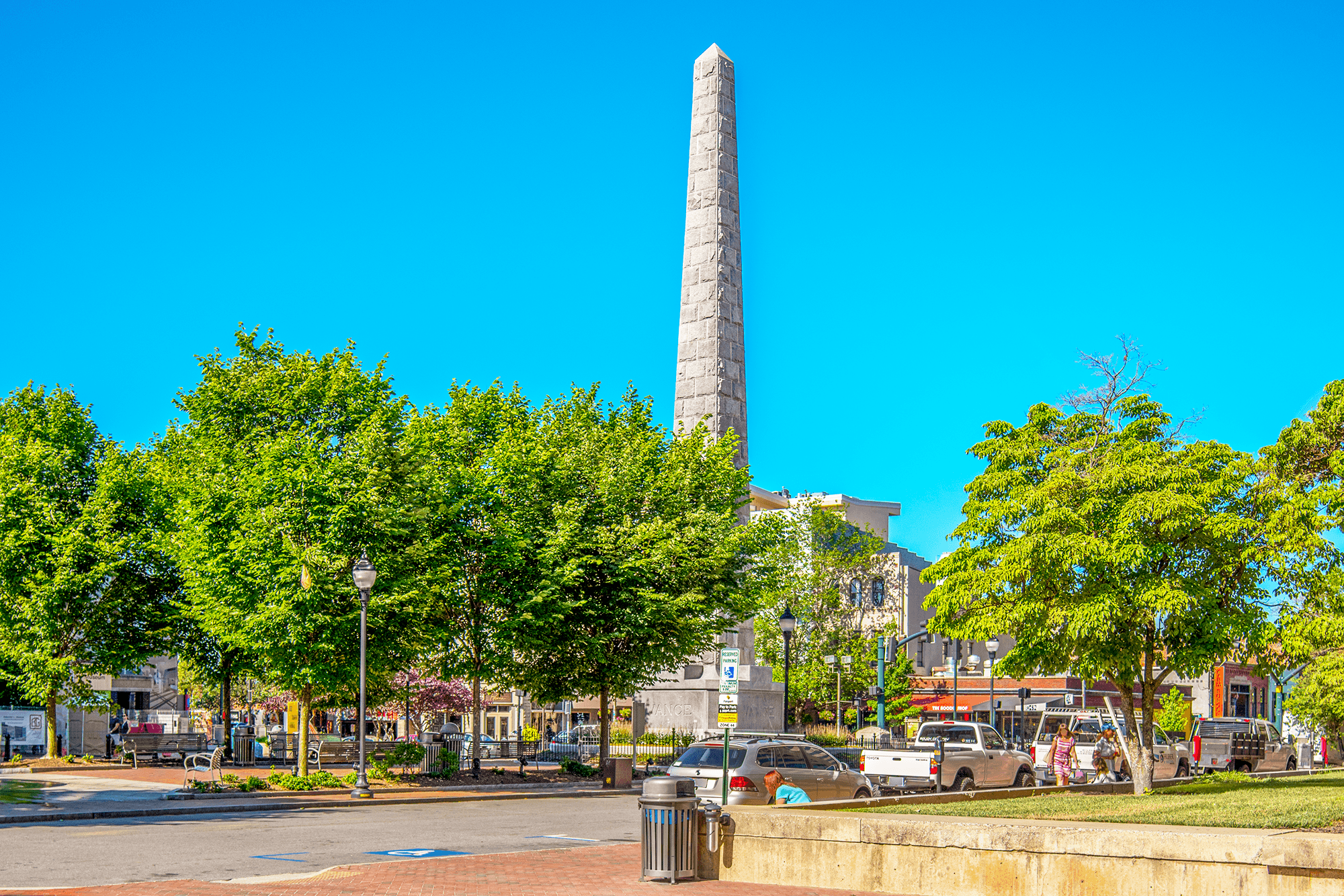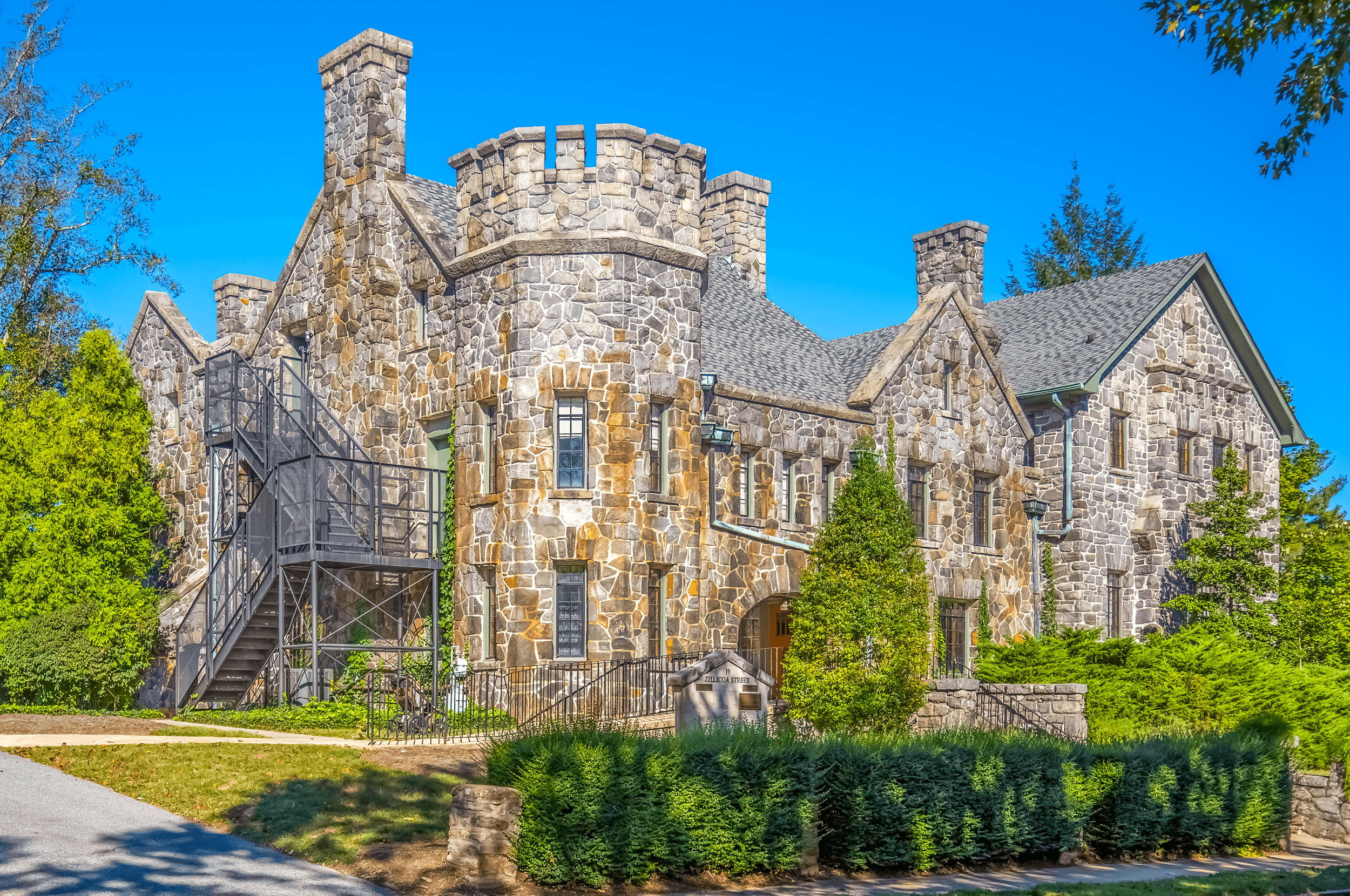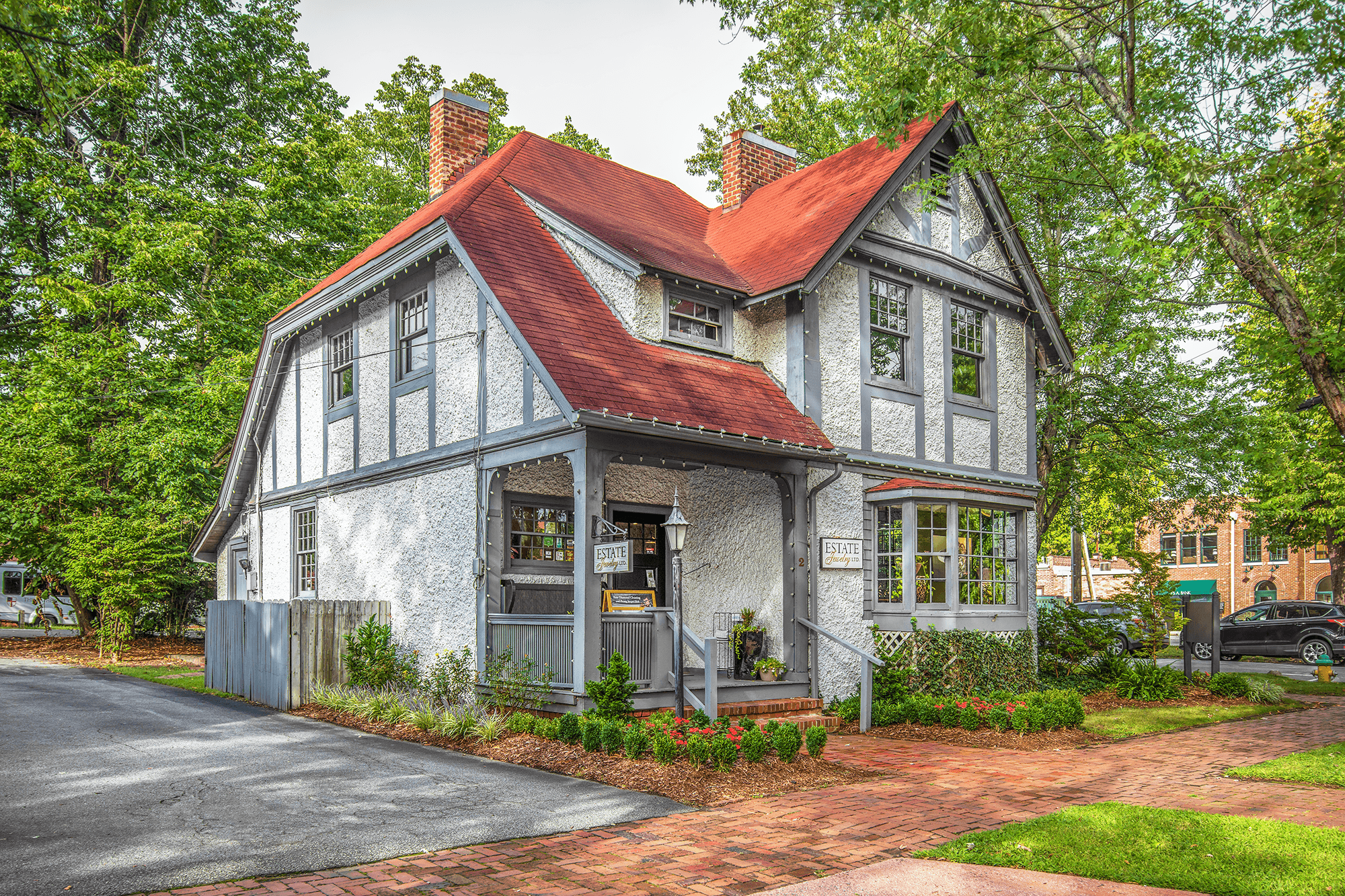Asheville City Hall

Updated: April 2019
“Equally Presentable From All Points of View”
Inspired by the mountains surrounding Asheville, its reddish soil and by a sense to express “fortress-like strength” and the inevitability of a government structure, Douglas D. Ellington (1886-1960) designed an Art Deco masterpiece in 1926: Asheville City Hall.
After its completion in 1928, Asheville’s mayor John H. Cathey praised the building as “of distinguished architecture and substantial construction which it is hoped will prove an attraction to visitors and a pride to residents.”
Each roof segment connects through a vertical band, each with green, blue and gold highlights. Douglas Ellington’s signature feather-like ornaments can be found on several areas of the façade.
Architecture
Following his unique design approach, architect Douglas Ellington created an office building, whose appearance was massive and fortress-like but also fresh and vivid at the same time. As Douglas Ellington stated in The Architectural Record, he wanted the eight-story-high structure to reflect the mountainous background of Asheville and added that “the particular marble, brick, and terra cotta were selected so as to embrace a transition in color paralleling the natural clay-pink shades of the local Asheville soil.” He paid particular attention to the color scheme, transitioning from lighter colors at the base of the building to darker colors on the roof. Each roof segment connects through a vertical band, each with green, blue and gold highlights. His signature feather-like ornaments can be found on several areas of the façade.
Douglas Ellington intended for the Asheville City Hall to be “equally presentable from all points of view, above and below.” It surely was back then and still is to this day.
In 1976, Asheville City Hall was added to the National Register of Historic Places.
Originally, Douglas Ellington had proposed that the Buncombe County Courthouse and the Asheville City Hall matched. The County Commissioners, however, found the Art Deco style “ostentatious and preferred a more traditional approach.” The result was a neo-classical building contrasting Ellington’s Art Deco style City Hall.
About Douglas D. Ellington (1886-1960)
Architect Douglas Ellington is known for his work in the Art Deco style.
In 1886, Douglas Ellington was born in Clayton, North Carolina. He studied architecture at the Drexel Institute in Philadelphia and the University of Pennsylvania.
In 1911 Douglas Ellington won the Prix de Paris from the Society of Beaux-Arts Architects, which allowed him to study at the École des Beaux-Arts in Paris.
In 1913, he became the first American to win the Prix Rougevin for architecture, the top honor for decorative competitions.
In the early 1920s, Douglas Ellington opened an office in Pittsburgh, PA. His work rapidly transformed from the classical Beaux-Arts to the modern Art Deco style.
In 1926, Douglas Ellington moved to Asheville, North Carolina. Besides the Asheville City Hall (1926), he architected other buildings in Asheville like the First Baptist Church (1925), the S&W Cafeteria (1929), the Biltmore Hospital (1929) and the → Asheville High School(1929).
In 1930, following the stock market crash of 1929, Douglas Ellington moved to Washington, D.C., to serve as principal architect for the federally sponsored new town of Greenbelt, Maryland.
In 1937, Douglas Ellington moved to Charleston, South Carolina.
In 1960, Douglas Ellington died at his self-designed summer home on Chunns Cove Road in Asheville, North Carolina.
70 Court Plaza, Asheville, NC 28801
All day.
All year.
STREET VIEWING ONLY.
Pack Square Parking Garage.
Public bus stop: College St at Court Plaza.
Stop Gray Line Historic Trolley: Pack Square.











